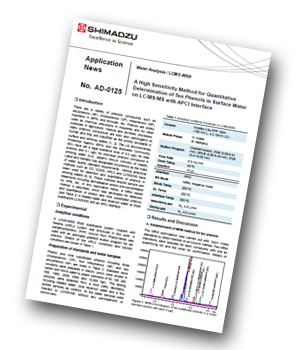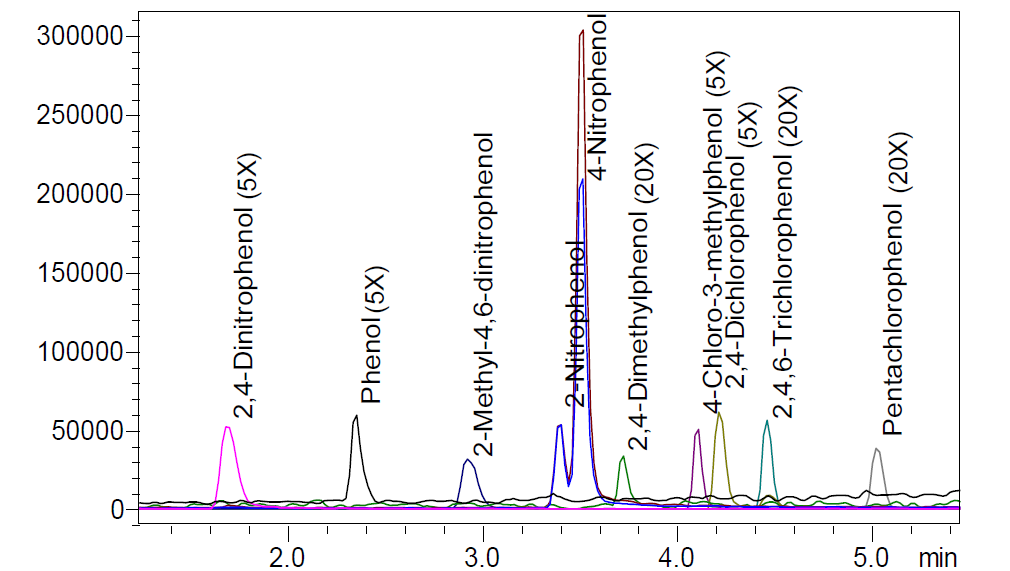Shimadzu has produced an application note describing an MRM-based method for detection and quantitation of phenol and nine substituted phenols in reservoir water, without pre-treatment and pre-concentration.
 The increasing discharge of phenol compounds from industrial and agricultural activities is a major environmental concern, resulting in water and soil pollution. Due to its high toxicity and carcinogenic properties, government agencies have implemented legal tolerance levels for phenol content in surface and drinking water. For instance, the US EPA implemented a legal tolerance level of 0.5 µg/L for total phenols and 0.1 µg/L for individual phenolic compound in drinking water. Methods to determine phenols content plays a significant role in resolving these issues and remains in high demand. However, to accommodate large sampling operations, the ideal detection method should demonstrate cost effectiveness by offering a simple operation workflow with high sensitivity.
The increasing discharge of phenol compounds from industrial and agricultural activities is a major environmental concern, resulting in water and soil pollution. Due to its high toxicity and carcinogenic properties, government agencies have implemented legal tolerance levels for phenol content in surface and drinking water. For instance, the US EPA implemented a legal tolerance level of 0.5 µg/L for total phenols and 0.1 µg/L for individual phenolic compound in drinking water. Methods to determine phenols content plays a significant role in resolving these issues and remains in high demand. However, to accommodate large sampling operations, the ideal detection method should demonstrate cost effectiveness by offering a simple operation workflow with high sensitivity.
 Here, we described an MRM-based method for detection and quantitation of phenol and nine substituted phenols in reservoir water, without pre-treatment and pre-concentration. Coupled with a pentafluorophenyl column, treated water and reservoir water were analysed on a triple quadrupole LC/MS/MS with an APCI interface. This method demonstrated high sensitivity detection of all ten phenols in water samples that were injected directly into the LC/MS/MS. Furthermore, with fast gradient elution of 8 minutes, the limit of detection achieved by this method was better than 0.1 µg/L for most of the phenol compounds.
Here, we described an MRM-based method for detection and quantitation of phenol and nine substituted phenols in reservoir water, without pre-treatment and pre-concentration. Coupled with a pentafluorophenyl column, treated water and reservoir water were analysed on a triple quadrupole LC/MS/MS with an APCI interface. This method demonstrated high sensitivity detection of all ten phenols in water samples that were injected directly into the LC/MS/MS. Furthermore, with fast gradient elution of 8 minutes, the limit of detection achieved by this method was better than 0.1 µg/L for most of the phenol compounds.
(The figure shows an MRM chromatogram of ten substituted phenols in a mixed standard solution with each 5 µg/L.)




